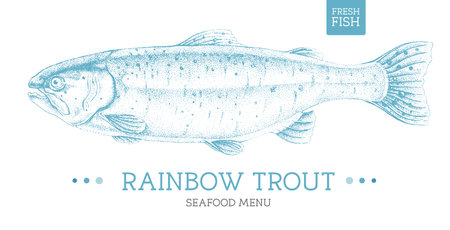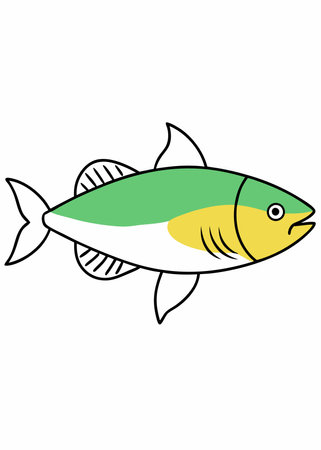Introduction: Why Trout ID Matters
If you’re an angler hitting the rivers and lakes of the United States, knowing your trout isn’t just a cool party trick—it’s essential. Correctly identifying Rainbow, Brook, and Brown trout can make or break your day on the water. First off, it’s a cornerstone of conservation. Each trout species has its own habitat needs and population status; misidentifying them can lead to unintentional harm, especially when catch-and-release rules or special regulations are in play. Next, legal regulations in many states require anglers to know exactly what they’ve caught. Size limits, bag limits, and open seasons often vary by trout species—so a simple mistake could mean an unexpected ticket from your local game warden. Finally, outdoor ethics demand respect for the land, water, and fish we pursue. Being able to distinguish between Rainbow, Brook, and Brown trout shows that you’re not just out for a catch—you’re invested in the well-being of America’s wild waters and fisheries. So before you cast your line, let’s dive into why proper trout identification should be part of every angler’s skillset.
2. Rainbow Trout: Distinctive Features
If you’re out on American streams or lakes and want to confirm you’ve spotted a rainbow trout, there are several distinctive features to look for. These fish are not only one of the most popular gamefish in the United States, but their unique appearance also makes them relatively easy to identify compared to brook or brown trout.
How to Spot a Rainbow Trout
Rainbow trout are aptly named for their vibrant coloration. The most recognizable trait is the pinkish-red horizontal stripe running from the gills all the way back to the tail. This band stands out clearly against their lighter silver or olive-green background. Along with this, they have small black spots that cover their back, dorsal fin, and tail (caudal fin).
Key Physical Features
| Feature | Description |
|---|---|
| Coloration | Silvery body with greenish-blue tones on top; distinct pink/red lateral stripe; white belly |
| Spotting | Small black spots concentrated on the upper body, dorsal fin, and tail; spots rarely appear below the lateral line |
| Size | Typically 10–16 inches in length in streams, but can reach over 20 inches in larger lakes or rivers |
| Mouth | Mouth extends just past the eye; no pronounced hooked jaw like some other trout species |
Typical Habitats in American Waters
Rainbow trout are highly adaptable and can be found across a wide range of habitats throughout North America. They prefer cool, clear streams and rivers with gravel bottoms, but they also thrive in lakes and reservoirs, especially where water temperatures stay below 70°F (21°C). In the western U.S., rainbows are often native or well-established, while in the East and Midwest many populations are maintained by stocking.
Where You’ll Most Likely Find Them:
- Mountain Streams: Cold, fast-moving waters with plenty of oxygen and hiding spots among rocks or submerged logs.
- Lakes & Reservoirs: Deeper, cooler sections during summer; shallower waters near shore during spring and fall.
- Tailwaters: Below dams where water stays cold year-round—a favorite for both wild and stocked rainbows.
Spotting a rainbow trout is about noticing that signature flash of color and those telltale spots. Whether you’re fishing or just hiking along a riverbank, knowing these key identifiers will help you quickly distinguish rainbows from their brook and brown cousins.

3. Brook Trout: America’s Native Char
Key Visual Markers of Brook Trout
Brook trout, known scientifically as Salvelinus fontinalis, stand out as America’s only native char and are easily recognized by their striking appearance. Look for a dark olive-green back marbled with lighter, wavy patterns called vermiculations. Their flanks showcase a dazzling mix of yellow spots interspersed with distinctive red spots, each surrounded by a subtle blue halo. The lower fins are a dead giveaway—bright orange to red in color, sharply edged with white and then black bands. These unique features make brook trout instantly recognizable in any clear mountain stream or woodland creek.
Ecological Details and Preferred Habitat
Brook trout thrive in cold, clean, well-oxygenated water. You’ll often find them in small headwater streams, spring-fed creeks, and shaded forest rivers throughout the Northeast, Midwest, and Appalachian regions. Sensitive to pollution and temperature changes, their presence is a sure sign of a healthy ecosystem. They prefer gravelly bottoms for spawning and feed on aquatic insects, making them an indicator species for stream health.
Cultural Significance and Conservation
As the only native trout species east of the Rockies, brook trout hold a special place in American angling lore. Revered by fly fishers since colonial times, they symbolize wild beauty and the unspoiled wilderness of America’s backcountry. With habitat loss and competition from introduced trout species threatening their numbers, conservation efforts focus on restoring coldwater habitats and limiting invasive species to protect this iconic fish for future generations.
4. Brown Trout: The Wily Import
Brown trout (Salmo trutta) are the clever outsiders of North American streams and rivers, originally hailing from Europe. Introduced to American waters in the late 1800s, these fish quickly earned a reputation for being both adaptable and elusive—traits that make them favorites among seasoned anglers.
Identification Clues for Brown Trout
Spotting a brown trout is all about paying attention to detail. Heres what sets them apart:
| Feature | Description |
|---|---|
| Origins | Native to Europe, introduced to North America in the 19th century |
| Main Body Color | Golden-brown or tan with an olive back; belly is usually creamy white or yellowish |
| Markings | Black spots scattered on the back and sides; distinctive red or orange spots often ringed with pale halos along the lateral line |
| Tail (Caudal Fin) | Usually unspotted, which helps distinguish from rainbow and brook trout |
| Mouth Size | Larger mouth that extends past the eye—built for catching bigger prey |
| Behavior in North America | Nocturnal feeders, favoring deep pools and undercut banks; known for being wary and tough to catch during daylight hours |
Telltale Signs and Angling Tips
Browns are masters at blending in, so look for their signature golden hue and those bright red spots when peering into clear water. Unlike rainbows or brooks, brown trout tend to stay hidden during high sun, becoming more active at dawn, dusk, or under cloudy skies. If you’re hoping to outsmart one on American rivers, stealth and patience are your best allies.
5. Side-by-Side Comparison: Field Tips
A Practical Breakdown for On-the-Stream Identification
When you’re knee-deep in a cold mountain stream, time is of the essence—so knowing how to quickly tell apart rainbow, brook, and brown trout is key. Here’s a straightforward field guide to help you make quick calls in real-world conditions.
Color Patterns & Markings
Rainbow Trout: Look for a distinct pinkish-red stripe along each side, with black spots scattered across the back, dorsal fin, and tail. Their body tends to have a silvery sheen, especially on younger fish.
Brook Trout: These are the most colorful—olive-green backs with worm-like light markings (vermiculations), yellow spots mixed with smaller red spots surrounded by blue halos along their sides. The lower fins have white leading edges bordered by black.
Brown Trout: Generally golden-brown or tan with large black and red-orange spots, especially near the gills and along the sides. Spots often have pale halos and are less dense on the tail than in rainbows.
Body Shape & Size
Rainbow Trout: Sleek, streamlined bodies built for fast water. Tails are more squared off.
Brook Trout: Stocky and shorter, with a blunt nose. Fins are noticeably larger in proportion to their body size.
Brown Trout: Heavier-bodied and more robust, particularly as they age. Their heads are relatively large compared to rainbows or brooks.
Behavioral Clues
Rainbow Trout: Often found in faster riffles and runs, actively feeding near the surface.
Brook Trout: Prefer cooler headwaters and shaded streams; more likely to be found in quiet pools or undercut banks.
Brown Trout: Secretive and wary—look for them in deeper pools, under logs, or close to structure during daylight; they often feed more at dusk or night.
Quick Field Advice
If you’re short on time, focus first on color patterns—especially that rainbow stripe or those blue-haloed red spots. Next, check the fins: white-tipped means brook trout. For browns, look for gold tones and scattered red/black spots without any bold lateral stripe. And remember: behavior gives clues too—active feeders in riffles (rainbow), pool dwellers (brook), or lurking shadows (brown). With these tips in mind, you’ll be ready for confident ID on any American trout stream.
6. Conservation Notes & Responsible Angling
Trout populations across the United States face a variety of challenges, from habitat loss and water pollution to pressure from overfishing and the introduction of non-native species. Rainbow, brook, and brown trout each have unique vulnerabilities depending on their native ranges and environmental needs. In many regions, wild brook trout are especially at risk due to warming waters and competition with more aggressive species like browns and rainbows.
To help ensure healthy fisheries for years to come, anglers play a critical role in conservation. Practicing ethical catch-and-release is one of the most effective ways to support sustainable trout populations. Here are some quick tips:
Handle With Care
Wet your hands before touching any trout to avoid damaging their protective slime coat. Use barbless hooks whenever possible—they make releasing fish quicker and less stressful.
Minimize Air Exposure
Keep the fish in the water as much as possible during unhooking and photo ops. Ideally, trout should be out of the water for less than 10 seconds.
Respect Regulations
Always follow local fishing regulations regarding seasons, size limits, and catch quotas. These rules are designed to protect vulnerable populations and ensure everyone can enjoy these iconic American fish for generations.
By identifying your catch correctly and practicing responsible angling habits, you’re not just enjoying the great outdoors—you’re helping preserve it.


